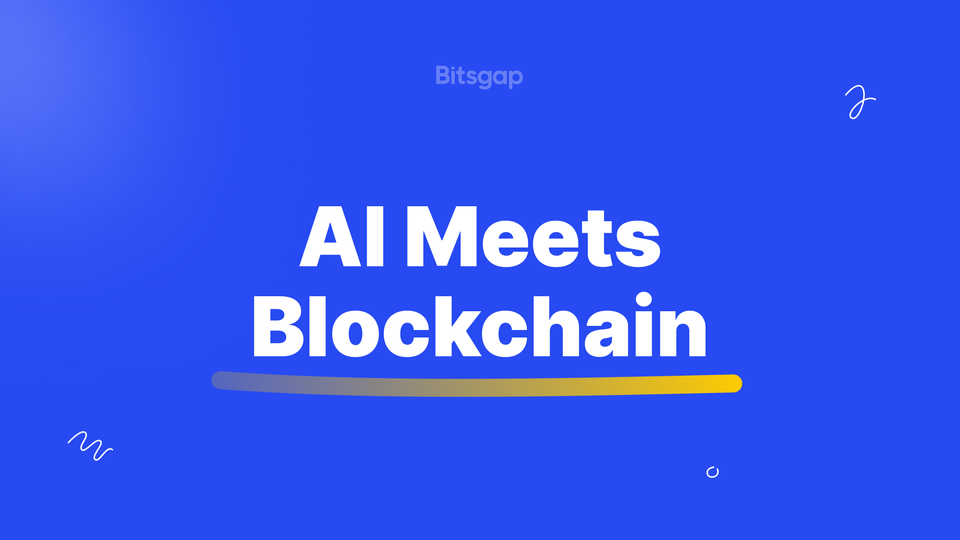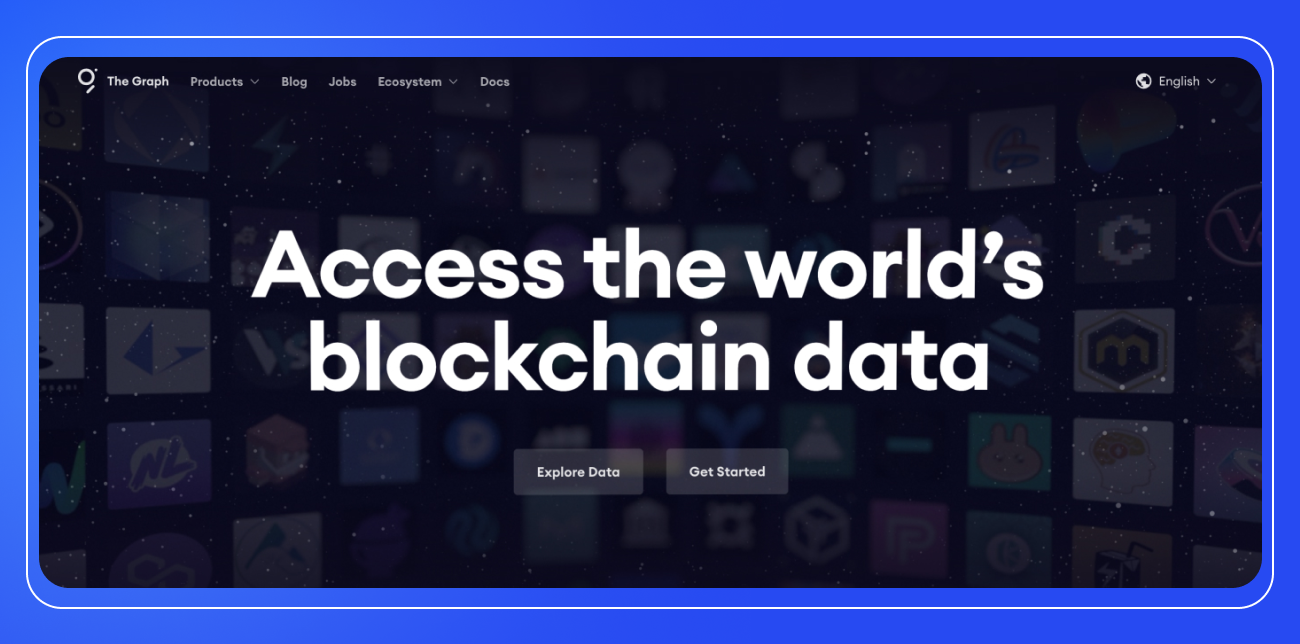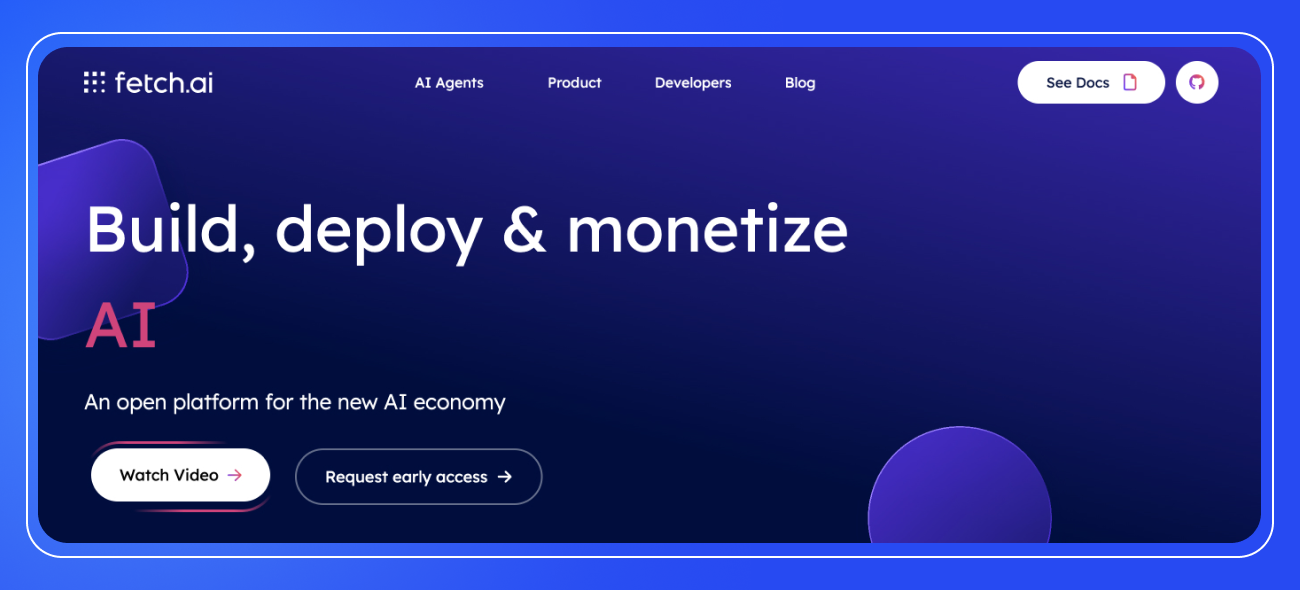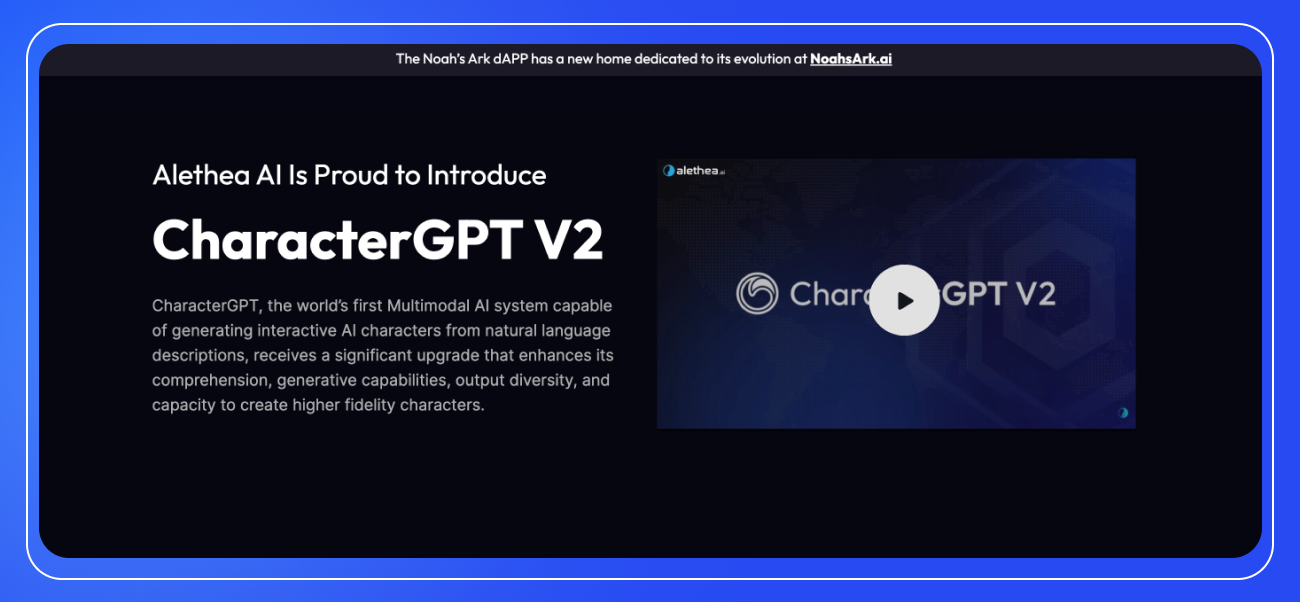
Artificial Intelligence and Blockchain: Prospects for Technology Fusion
The territories of AI and blockchain have been extensively mapped, yet the frontier where they converge remains largely unexplored. Who knows what opportunities we may uncover in fusing the benefits of both?
While there's plenty of research into both AI and blockchain on their own, the intersection of these technologies remains largely uncharted territory. Let's dive in and explore the potential of merging these two fields, shall we?
`Artificial intelligence and blockchain are at the cutting edge, each disrupting the status quo in their own right. Blockchain isn't just for trading digital coins; it's a powerhouse for managing records and transactions in a way that's both open and secure, without the need for a middleman. And it's not just about keeping tabs on who owns what — with smart contracts, blockchain is making it possible for deals and interactions to happen automatically. Meanwhile, AI is giving machines a brain, teaching them to make decisions just like we do. In this blog post, we explore how AI can enhance blockchain, what this means for the future of industry, and what potential lies in their union. We'll also tackle the challenges and unresolved questions that come with merging AI with blockchain technology.
What Are AI and Blockchain?
AI, or Artificial Intelligence, refers to the simulation of human intelligence in machines that are programmed to think like humans and mimic their actions. These machines can learn from experience, adjust to new inputs, and perform human-like tasks. AI encompasses a variety of technologies including machine learning (where computers are trained to learn from and make decisions based on data), natural language processing (enabling computers to understand and respond to human language), and robotics, among others.
Blockchain, on the other hand, is a decentralized ledger of all transactions across a peer-to-peer network. Using this technology, participants can confirm transactions without the need for a central clearing authority. Blockchain can be used to facilitate secure and transparent transactions and is the technology underlying cryptocurrencies like Bitcoin. It ensures the fidelity and security of a record of data and generates trust without the need for a trusted third party. Blockchain technology features key concepts like decentralization, immutability, and transparency, and it enables smart contracts – self-executing contracts with the terms directly written into code.
Both AI and blockchain are considered revolutionary in their ability to change the way we interact with technology and have a wide array of applications across different sectors.
Why AI Merge: Reasons for Combining Blockchain and Artificial Intelligence
Blockchain and AI make an intriguing pair. Blockchain offers a way to share data and collaborate while still protecting sensitive information. This gives AI algorithms access to large, high-quality datasets to learn from. Meanwhile, AI provides the analytical horsepower to derive insights from blockchain data. Together, they could drive all kinds of new innovations:
- Blockchain offers decentralization, transparency, immutability, and security. These features can improve the integrity and relevance of the data used to train AI systems.
- Blockchain's distributed ledger, peer-to-peer networking, consensus protocols, and cryptography may enrich AI in terms of data, computing power, and algorithms. Together, they could enable new decentralized and collaborative AI models tailored to diverse applications.
- Smart contracts could also become more intelligent and autonomous with AI enhancement, streamlining processes on the blockchain.
- AI's decentralized techniques like federated learning may help scale blockchains by addressing data redundancy.
Building on this potential, the next section will undertake an in-depth examination of how blockchain and AI can be combined in impactful ways.
Artificial Intelligence Blockchain Fusion
Data Analysis
The AI industry currently lacks efficient data sharing and management systems. Open source datasets suffer from uneven quality control, with data scattered and inconsistent. Most training data resides within governments and large companies, bounded by regulations and commercial interests that restrict circulation and access. This severely limits smaller enterprises from developing AI applications. Additionally, intelligent agents need ample real-time data to make sound decisions. Without sufficient live data, their intelligence is restricted. On top of this, the poor credibility of raw data and privacy concerns diminish the authenticity, timeliness and trustworthiness of data traded on the open market.
Blockchain's distributed databases could address these issues by enabling decentralized, tamper-proof data sharing between nodes on a network.
Firstly, blockchain systems are updated through interactions between distributed entities, not a central authority. This prevents unauthorized data changes.
Secondly, blockchain verification can facilitate cleaner, more organized personal data to smooth integration and form new data marketplaces. Technologies like homomorphic encryption and differential privacy can protect data privacy in multi-party sharing.
Finally, blockchain incentives and consensus draw in more open, shared real-time data. With richer data, AI predictions, evaluations and algorithms will become more accurate and reliable. Overall, blockchain has the potential to transform how AI systems access, manage and utilize data.
Computing Power
The high costs of computing power pose major challenges for the AI industry today. As data volumes explode and algorithms grow more complex, AI models now require immense computing resources to train on massive datasets. Building the hardware for an AI computing center can cost over a million dollars — far too expensive for most small and medium enterprises. This results in insufficient, unaffordable computing power. According to an OpenAI report, since 2012 the computing needs of cutting-edge AI have risen 10x annually. Computing power has become the main bottleneck in AI application development.
Blockchain's distributed computing potential could help by using idle GPUs and resources from smaller companies and individuals as nodes in a shared computing network for AI modeling. Building a decentralized AI computing infrastructure via blockchain can operate neural networks on distributed nodes worldwide, tapping into unused local resources for decentralized intelligent computing. This shifts the focus from constantly upgrading hardware for power. Smart contracts can also dynamically adjust computing nodes based on a user's application needs, delivering flexible computing tailored to specific requirements.
Mining blockchain itself requires vast computing power, with Bitcoin consuming around 2.55 billion watts annually. Applying AI techniques to consensus mechanisms like POW and hashing could significantly improve efficiency and conserve power. Optimizing energy consumption with AI can make blockchain mining substantially more efficient.
Research and Development
Despite surging demand, the complexity of AI algorithm research and development presents a high barrier to entry, both in terms of the expertise required and the cost involved. As a result, the current algorithms are suitable for only a select number of companies. Crafting tailored AI solutions comes with steep technical and financial challenges, making it nearly impossible for the majority of businesses to pursue independent AI development. Especially when AI development tools remain in the hands of a select few. This has led to 'information silos' and barriers that hinder the free exchange of resources. Open-source algorithms offer an alternative but come with licensing snags, versioning headaches, and innovation-stifling restrictions. Tapping into communal code can also risk intellectual property exposure.
Blockchain's decentralized collaboration presents a key to AI's walled garden. Its shared ledger could scaffold an open ecosystem for managing machine learning - optimizing, updating, and maintaining algorithms communally. By integrating blockchain's peer-to-peer structure, AI development could become more accessible, efficient, and innovative.
A broader community could contribute ideas and enhance algorithms. Resources would flow freely instead of siloing. Blockchain's smart contracts could also enable a thriving AI model marketplace, connecting users and developers while protecting intellectual property and privacy.
👉 With incentives aligned for sharing over shielding progress, blockchain could lower the barriers for participating in AI's advancement. The combined technologies offer a path toward democratizing AI, cultivating a flourishing community of minds and lowering walls to set AI's potential free.
Contract Intelligence
Blockchain has reimagined agreements through the rise of smart contracts. These are coded programs living on the blockchain that execute based on predefined rules. Acting as automated enforcers, smart contracts enable self-executing transactions through decentralized protocols.
While traditional contracts rely on human interpretation, smart contracts directly manipulate blockchain assets via programmed logic. They embed agreements directly into digital workflows, administering systems and markets automatically when conditions trigger. By integrating code with assets, data, and transactions on the blockchain, smart contracts create a controlled environment to program interactions. This allows for complex contract capabilities not possible with static documents.
However, while smart contracts aim to digitally automate agreements, their capabilities fall short of replacing actual legal contracts. At their core, smart contracts are just transaction processors and state machines following predefined code.
They ensure accurate execution of digital agreements but cannot replicate key aspects of real contracts. Smart contracts lack specific terms, conditions, dispute resolution — and legal standing.
The name oversells their functionality in both theory and practice. Smart contracts are not inherently "intelligent" nor legally enforceable like business agreements require.
Smart contracts also come with security risks that expose them to exploitation. Since they are immutable, any issues cannot be fixed online, potentially triggering cascading failures.
Their deterministic nature only allows preset outcomes based on defined inputs. Smart contracts lack real-world flexibility required in agreements. The rigid, unchanging code cannot adapt like legal contracts.
So in practice, smart contracts behave predictably based on predefined limitations, not intelligently. Despite their name, they simply process information in a fixed manner.
While they enable automation, their brittle nature leaves smart contracts vulnerable. Lacking fluidity and human oversight, the slightest vulnerability in smart contract code can be attacked and produce disastrous domino effects. Their immutability forestalls easy fixes.
AI technology promises to enhance the relatively basic smart contract technology in blockchain, by enabling contracts with intelligent features:
- First, AI can equip smart contracts with domain-specific analytical and predictive capabilities. In insurance for example, AI models could detect fraud patterns and trigger anti-fraud responses per contract rules. AI-powered contracts can manage risks beyond human foresight.
- Second, AI introduces evolutionary, bio-inspired thinking. Smart contracts can evolve through AI engines that transform user inputs into tailored "Smart Protocols" using templates and wizards.
- Third, AI contributes collective computational power through continuous learning. As it analyzes more agreements, AI becomes better at drafting new ones.
However, challenges remain in deeply fusing AI with smart contracts. While AI can automate simpler agreements, human intervention may still be needed to resolve disputes for complex contracts.
But by complementing their respective strengths, AI and smart contracts can move closer towards the ideal of intelligent, self-executing digital agreements — governed flexibly by code, evolving dynamically over time, and driving automation where appropriate while still allowing human guidance when needed.
Are There Any AI Blockchain Projects Worth Exploring?
Most certainly, a number of AI-driven cryptocurrency ventures are gaining momentum. While we don’t say that the following five are the top of the pops in the field, they certainly hold significant promise:
The Graph (GRT)

The Graph is a decentralized protocol for indexing and querying data from blockchains, starting with Ethereum. It allows developers to build and publish various APIs, known as "subgraphs," which facilitate easy data access for blockchain applications.
Unique Features:
- Decentralized querying: Enables decentralized applications (DApps) to efficiently and securely query blockchain data.
- Subgraphs: Developers can create and publish subgraphs, which are open APIs to access indexed blockchain data.
- Community-driven: Over 3,000 subgraphs have been deployed, and there's a robust community supporting the project.
Utility Token: GRT is the native utility token used for various network activities, including incentivizing data providers (indexers), curators, and delegators.
Fetch.AI (FET)

Fetch.AI is an artificial intelligence-enhanced blockchain network that is designed to connect IoT devices and algorithms to enable collective learning.
Unique Features:
- AI-enhanced smart contracts: Enables complex problem-solving capabilities.
- Interchain connectivity: Acts as a gateway between different chains, broadening its use cases.
- Optimization: Can optimize tasks like transportation or logistics networks.
Utility Token: FET token is utilized within the network to access various services and as a medium of exchange.
Ocean Protocol (OCEAN)

Ocean Protocol is a decentralized data exchange protocol that aims to unlock data for analysis and AI purposes, allowing data owners to monetize their data while preserving privacy and control.
Unique Features:
- Data Tokenization: Users can tokenize their data, making it easier to buy, sell, and access datasets.
- Data Marketplaces: Businesses can build and launch their own data marketplaces on the protocol.
- Secure Data Sharing: Enables secure sharing of data while maintaining privacy.
Utility Token: OCEAN token is used for staking and buying/selling data within the Ocean Market.
Alethea AI (ALI)

Alethea AI is a project that operates at the intersection of Generative AI and Blockchain technology with a mission to facilitate decentralized ownership and democratic governance of AI.
Unique Features:
- Creation of AI characters: Users can create AI characters that are interactive, can be tokenized on the blockchain, and can be used across different platforms.
- Noah’s Ark dAPP: This decentralized application is a platform where CharacterGPT V2 is accessible, enabling the creation of realistic, interactive AI characters.
- AI Protocol: Acts as the property rights infrastructure for the generative AI economy. This suite of decentralized smart contracts enables the ownership, interoperability, and governance of AI Characters and Assets.
- Decentralized governance: ALI emphasizes community governance over the AI assets created and used on the platform.
Utility Token: The Artificial Liquid Intelligence (ALI) utility token is used to govern, regulate, and enable transactions within the AI Protocol ecosystem.
Ready to Trade AI Blockchain Tokens?
Seeking a launchpad for trading top tokens and tools to master crypto's volatility? Look to Bitsgap — the all-in-one platform connecting you to over 15 major exchanges.
Bitsgap arms you with advanced charting to spot opportunities, smart orders to lock in profits, and bots to automate your trades and execute winning strategies.
Launch your trading quest with a 7-day free trial of Bitsgap's PRO plan today!
Conclusion
This article has explored the complementary strengths of AI and blockchain. We've analyzed their capabilities across data, algorithms, computing power, and more. It's clear these technologies can mutually empower one other. Combining AI's intelligence with blockchain's distributed security unlocks new possibilities. Together, they can lower barriers to AI development, enhance smart contracts, and fuel innovation across industries.
We've also covered some pioneering crypto projects using this fusion. Eager to trade the crypto assets powering this transformation? Bitsgap is the top spot. Why not subscribe today?
FAQs
Is Blockchain Artificial Intelligence?
No, blockchain is not a form of artificial intelligence. Blockchain is a distinct technology that records information in a way that makes it difficult or impossible to change, hack, or cheat the system. It's a digital ledger of transactions that is duplicated and distributed across the entire network of computer systems on the blockchain. In contrast, artificial intelligence involves creating algorithms and systems that can perform tasks which typically require human intelligence, such as visual perception, speech recognition, decision-making, and language translation.
How Are Artificial Intelligence (AI) and Cryptocurrency Different?
Artificial Intelligence (AI) and cryptocurrency are fundamentally different in their purposes and functions. AI is designed to replicate human cognitive functions and is used in various fields to improve efficiency, automate tasks, and make more informed decisions. It involves machine learning, problem-solving, and data analysis capabilities.
Cryptocurrency, on the other hand, is a type of digital or virtual currency that uses cryptography for security and operates independently of a central bank. Its foundation is blockchain technology, which maintains a secure and decentralized record of transactions. Cryptocurrency is primarily used for financial transactions online and as an investment vehicle.
While AI can be used to enhance the functionality of cryptocurrencies and blockchain technology, for instance, by optimizing trading algorithms or improving security, they remain separate technologies with different applications.
